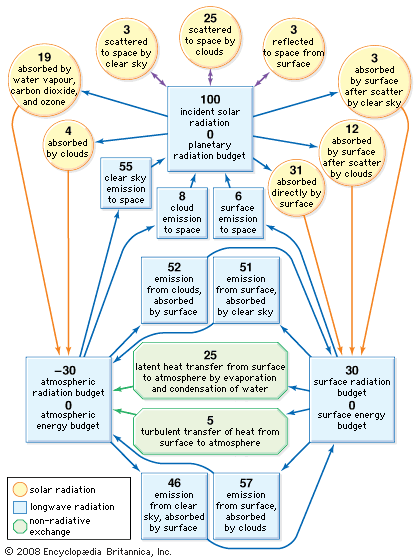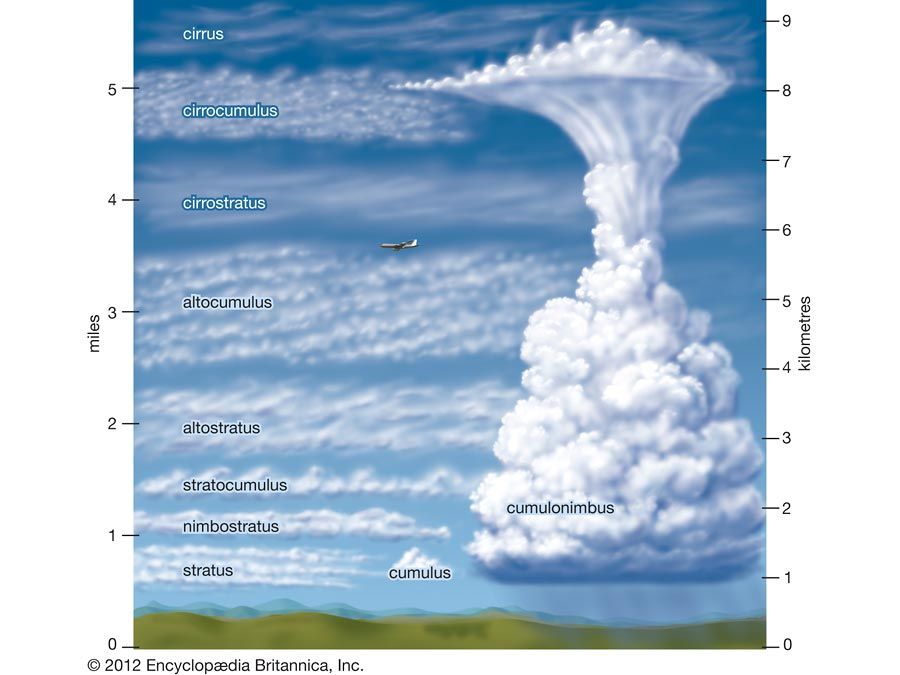The meteorologist classifies clouds mainly by their appearance, according to an international system similar to one proposed in 1803. But because the dimensions, shape, structure, and texture of clouds are influenced by the kind of air movements that result in their formation and growth and by the properties of the cloud particles, much of what was originally a purely visual classification can now be justified on physical grounds. The first International Cloud Atlas was published in 1896. Developments in aviation during World War I stimulated interest in cloud formations and in their importance as an aid in short-range weather forecasting. ...(100 of 37038 words)
- Home
- History & Society
- Science & Tech
- Biographies
- Animals & Nature
- Geography & Travel
- Arts & Culture
- Money
- Birds, Reptiles & Other Vertebrates
- Bugs, Mollusks & Other Invertebrates
- Environment
- Fossils & Geologic Time
- Mammals
- Plants



























